Keep the Tail Wagging is supported by pet parents. I occasionally earn a commission (at no additional cost to you) when you click through an affiliate link to one of my favorite products. Thank you for your support. Read More
I fill my freezers with bone broth for the dogs several times a year. It's an easy recipe and offers many health benefits.
What is Bone Broth?
Bone broth for dogs is a nourishing liquid made by simmering animal bones and connective tissue over 24 hours in a slow cooker or 4-6 hours in a pressure cooker. This broth is rich in nutrients such as collagen, gelatin, and minerals that can benefit dogs.
Nutrients in Bone Broth
Surprisingly, bone broth is full of nutrients that support overall wellness.
- collagen for skin and coat health
- glucosamine and chondroitin for the joints
- calcium, phosphorus, and magnesium for bone health
Bone broth isn't an alternative to adding bone to a dog's diet.
Benefits of Bone Broth
Bone broth is easy to digest and can help with digestive issues due to its high content of amino acids and electrolytes. The minerals in bone broth can also support joint health, muscle growth, and overall immune system function in dogs. I make bone broth for my dogs because…
- Bone broth promotes a healthy digestive system.
- Bone broth supports joint health.
- Bone broth is great for senior dogs.
- Bone broth acts as a liver detox,
- And bone broth is great for sick dogs because it provides them with nutrition when not eating.
Additionally, bone broth can be used as a flavorful topper for a dog's food, to warm cold raw dog food, or as a basis for homemade dog treats. It is essential to ensure that the bone broth is made without added ingredients like garlic or onions, which can harm dogs.
Bone broth isn’t a meal; it’s to be used as a supplement for our dogs. But I do feed bone broth as a meal when a dog isn't feeling great or on a modified fasting day.
Making a Bone Broth for Dogs
You can use a slow or pressure cooker to make my bone broth. Pressure cookers are best (for me) because they allow me to create several batches over a weekend; each batch takes four to six hours, with an additional hour to cool. The following are my recipes; however, many bone broth recipes are available for dogs online.
Preferred Bones
I use the following bones because they are available through my raw food co-op.
- pork rib bones
- beef rib bones
- bison oxtails
- lamb soup/neck/stock bones
You can also pick up soup bones at the grocery store, save your turkey and chicken carcass, or check with your local butcher.
Other bones that make a great bone broth include pig's feet, duck feet, knuckle bones (beef, bison), joint bones, chicken feet, chicken or turkey carcass, and marrow bones.
Bone Broth Ingredients
Remember that I use this; it's fast and easy but not set in stone.
- Raw apple cider vinegar to bring out the minerals in the bones. I add 1/4 cup to an 8-quarts.
- Bones of your choice.
- Enough water to cover the bones in the slow or pressure cooker.
Optional Ingredients
I like to make three versions of my bone broths – plain, turmeric, and mushroom. Additional ingredients to make the turmeric and mushroom recipes:
- turmeric powder; I add 1/4 cup to every 8-quarts
- shiitake mushrooms: 5 ounces (chopped up) to every 8 quarts
Directions
- Add bones, raw apple cider vinegar, and water to your slow or pressure cooker.
- If using a slow cooker, set it for 20-24 hours; if using a pressure cooker, set it for 4-6 hours. I cook my bone broth on our porch because the smell can be overwhelming.
- When the bone broth has cooled, fish out all of the bones.
- Transfer bone broth to 32-oz canning jars and store in the freezer until needed.
Tumeric Bone Broth
- Slow cooker: add turmeric 10 minutes before the bone broth is finished cooking.
- Pressure cooker: add turmeric after the bone broth is finished, as the broth is cooling.
Mushroom Bone Broth
I use medicinal mushrooms available at my local grocery store. The main one is shiitake mushrooms, which have numerous health benefits.
- contain beta-glucans, which can boost the immune system and help fight infections and diseases
- contain compounds such as ergothioneine, which have anti-inflammatory properties that can help reduce inflammation and lower the risk of chronic diseases
- a great source of antioxidants like selenium, vitamin C, and vitamin D, helping protect the body from free radical damage, reducing cancer risk
- supports heart health, lowers cholesterol levels, and prevents plaque buildup in the arteries due to their high beta-glucan content
- enhances brain function and improves memory and cognitive abilities
- good source of B vitamins, copper, and zinc, making them a nutritious addition to any diet
Adding Garlic to Bone Broth
Sometimes, I add garlic to my bone broth. This freaks people out, but the beauty of making dog food is that we can be inventive, and garlic has so many health benefits that I often add it as an ingredient to my bone broth or vegetable mix.
A study that is often referenced is said to prove that garlic is toxic to dogs. However, the study is flawed because the amount of garlic used was extraordinarily high and not something a reasonable pet parent would feed. There are several benefits to adding garlic to a dog's diet – I feed garlic to support the immune system and gut health, keep cancer at bay, and repel fleas and ticks.
A Few Trusted Sources Sharing the Benefits of Garlic
- Can Dogs Eat Garlic? The Surprising Truth, Dogs Naturally Magazine
- The Many Benefits of Garlic for Your Dog
- Garlic Safe for Dogs? Research Shows The Benefits And Cautions Of Using Garlic In Dog Food
Amount of Garlic in My Recipe
Please note that garlic is an optional ingredient. I add 5-7 cloves of garlic. This isn't 5-7 bulbs – just the cloves (as pictured below). I get five 32-ounce jars out of each batch of bone broth – the garlic is split over five jars, not nearly enough to cause harm to healthy adult dogs.
Benefits of Garlic for Adult Dogs
I add garlic to my dogs' diet because…
- garlic helps my dogs naturally repel fleas and ticks
- garlic boosts the immune system
- garlic helps the body naturally detox, keeping the liver healthy
- garlic boosts the metabolism, helping keep dogs at a healthy weight
- garlic is a natural antibacterial, antiviral, and antifungal – it fights infections in the body
- garlic has anti-cancer benefits
3 Warnings About Feeding Garlic to Dogs
Although I feel comfortable feeding garlic to my dogs, there are a few things to keep in mind before adding this food to the diet:
1 – Garlic shouldn't be fed to puppies because they don't start producing red blood cells immediately. I wait until my dog reaches seven months before adding garlic to their diet.
2 – Garlic shouldn't be fed to pregnant or nursing dogs because the garlic will pass on to the puppies (see #1).
3 – If your dog has an anemic condition or Hemangiosarcoma, it's important to avoid feeding garlic as it can exacerbate anemia.
How Long Does Bone Broth Last in the Freezer?
In my experience, bone broth will stay good for 3-4 days in the fridge and up to a year in the freezer, although I've kept commercial bone broth in the freezer for more than 12 months. Depending on the time of the year and how much bone broth I have on hand, I make bone broth at least once a month. I can usually mix up 5 to 10 jars in a day.
What if the Bone Broth Doesn't Gel?
Bone broth gelling is due to collagen, broken down into gelatin during cooking. Several factors can affect the gel-like texture of bone broth, such as the cooking time, the type of bones used, and the amount of water added. My bone broth may not gel if I forget the apple cider vinegar, which helps break down collagen and increases the chance of the broth gelling.
If your bone broth doesn't gel, it could be because there wasn't enough connective tissue and collagen in the bones used, or the broth was not simmered long enough. Continuous boiling or overheating can also cause the gelatin to break down and the broth to lose its gel-like consistency.
If you want to increase the chances of bone broth gelling, use bones with a high amount of collagen and cook for 24 hours in a slow cooker or 4-6 hours in a pressure cooker.
How Much Bone Broth I Give to My Dogs
There are several ways I serve bone broth to my dogs:
- poured over their food (chilled, room temperature, or warmed)
- as a frozen treat
- as a full meal on modified fasting days (or if a dog isn't feeling well)
Bone Broth Over Raw Dog Food
I pour about 1/4 cup (or less) of bone broth over my dogs' raw meals. Instead of heating it in the microwave, I set it on the counter an hour before mealtime to allow it to reach room temperature, or I set the glass jar in a small pot of water and simmer for 10 minutes or so.
Bone Broth as a Frozen Treat for Dogs
I invested in those cutesy ice cube trays with paw prints and bones; however, you can do this in regular ones, too. The dogs don't care.
I pour the cool bone broth into ice cube trays and freeze. I've also used the small Rubbermaid containers; the dogs lick them clean on hot days. Because the container is plastic, don't allow your dog to chew on it – they'll be tempted because the bone broth is SO GOOD.
I don't have a set serving amount of frozen bone broth; instead, I give a frozen treat to my dogs on hot days. If they're licking the bone broth out of a Rubbermaid container, they'll get one each weekend. If it's just an ice cube, I can add one to their meal a few times a week. It just depends on what I have on hand.
Serving Bone Broth to Dogs as a Meal
- Upset Tummy: sometimes dogs have an upset tummy, and when this happens, I'll feed bone broth instead of their normal meal because it's easier on the gut, and I know they're getting some nutrients.
- Modified Fasting Day: fasting dogs is a great way to give the gut a break and reset the system, but some dogs get hunger pukes, and some owners aren't comfortable skipping meals. This is why I love modified fasting days, as they still allow us to rest a dog's gut, and our dogs don't skip a meal.
I typically give my dogs about 1-1/2 cups of bone broth when I serve it as a meal. However, the dosage guidelines are 1 ounce for every 10 pounds of body weight.
Common Bone Broth Mistakes
I've made many mistakes when making bone broth…
- don't overfill the pressure cooker; leave a couple of inches at the top to avoid a mess.
- make sure you “seal” the pressure cooker
- use a strainer to make sure you removed all the bones
- scrape off the fat once the bone broth cools
Commercial Bone Broth
Not everyone can make bone broth at home. I couldn't imagine making it in a small kitchen or an apartment. But that's okay. Several commercial bone broth options are available, and I love products available by Green JuJu Kitchen and Solutions Pet Products.
Is Bone Broth a Requirement for Raw Feeding?
Absolutely not! But if you have a pressure cooker (or slow cooker) and some bones, then why not? If the only benefit of bone broth is that my dogs love it, I'm happy to make it because it's crazy easy. And if it turns out that my dogs are getting even more benefits than I realize, then BONUS!
A Warning About Bone Broth
One concern that has been raised regarding bone broth is its histamine content. Histamine is a chemical released by the immune system that triggers an inflammatory response to fight off infections and foreign substances. While bone broth does contain histamine, the levels are typically low and should not be a concern for most dogs.
Like humans, dogs can have a histamine intolerance that can severely affect their overall health. Unfortunately, some dogs may have an immune system that overreacts to histamine, leading to unpleasant symptoms such as itchy skin, rashes, vomiting, and diarrhea.
If your dog is experiencing any of these symptoms or is subject to mass cell tumors, you may want to avoid bone broth until you have a conversation with your veterinarian.
Alternative to Bone Broth
If bone broth isn't an option for your dog or you can't source bones, try making a meat broth instead. You can find several recipes for beef broth without bones online. Avoid ingredients dogs can't eat, like onions, peppercorns, or bay leaves. Keep it simple.
- Cut the beef into chunks and add to your stock pot with your favorite dog-friendly oil (olive oil, MCT oil); sear the beef on all sides until browned.
- Pour in enough water to cover the beef and slowly bring to a boil over medium-low heat.
- Boil your broth for 30 minutes, skimming any foamy scum that develops on the top of the broth; this creates a cleaner broth that lacks impurities.
- Reduce the heat to low and simmer for 1-1/2 hours or until the beef is tender.
You can add additional ingredients to your broth – dog-friendly vegetables, ginger, garlic, or other dog-friendly herbs – in Step 2 above.
Feeding a meat broth instead of a bone broth may not have the same benefits, but it's still a healthy way to hydrate a meal, add more nutrients to the diet, support gut health, and it's great for a dog that's not feeling well.



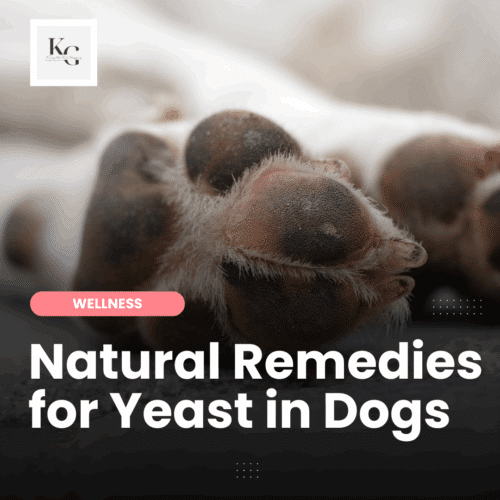
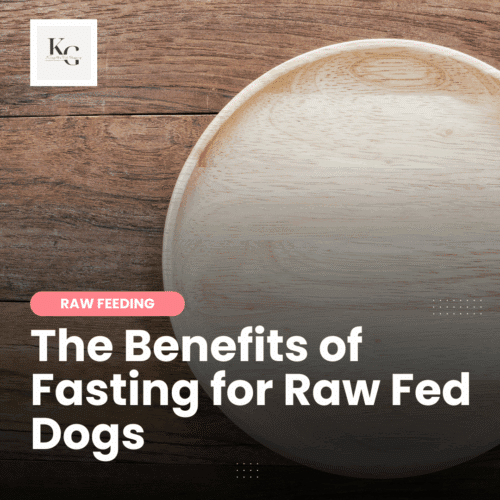
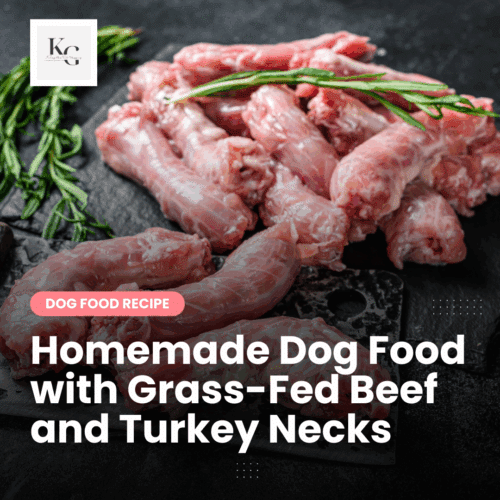
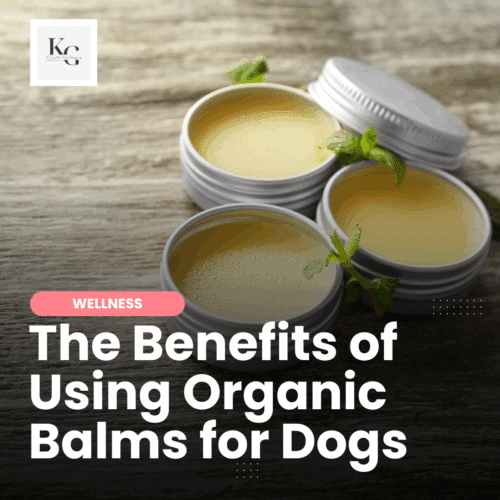

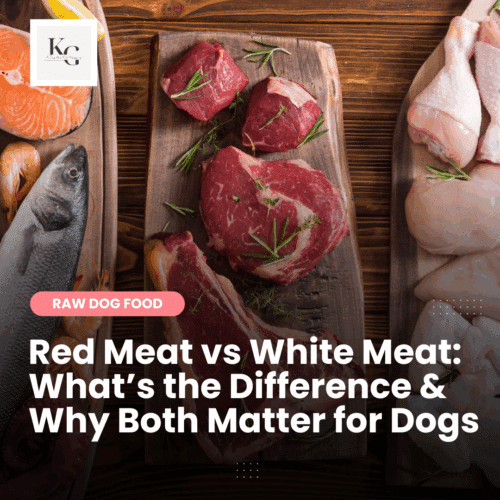
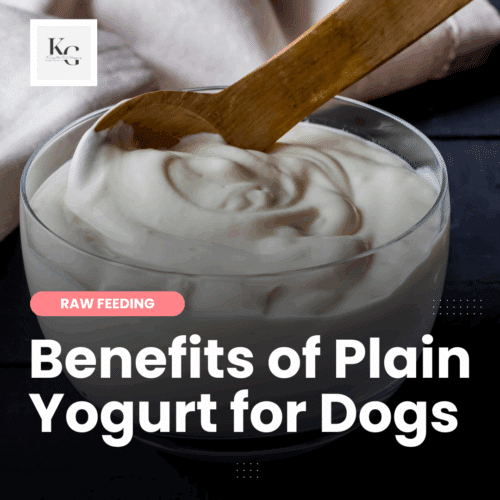


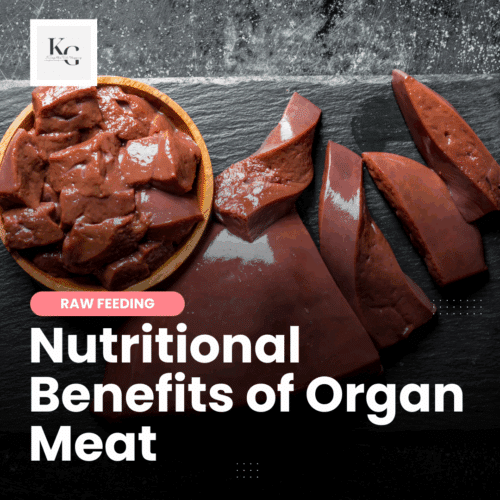



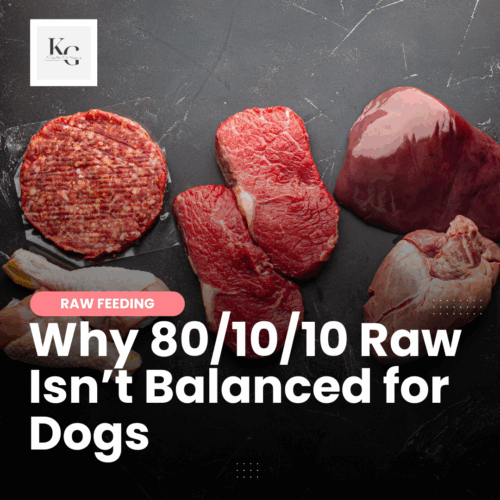
I love prepping bone broth for my dogs and they love it! But I haven’t tried a recipe like yours–with turmeric or mushroom. I will definitely try that one and with moringa leaves for added nutrients 🙂
Thank you for sharing this. My dogs love bone broth and I always try to treat them whenever I have time.
You can serve it either way.
Yo be clear, fo I serve the bone broth as a cool broth with the consistency if water or do I serve it as a jelly-like consistency?
I keep it in the fridge for up to 10 days.
How long can this broth be kept in the fridge?
Yep. You can use different bones. It really depends on what’s available for you.
Hiya thank you so much for the recipe and tips 🙂 I have to try it one day …could i make the broth using only marrow bones,maybe a turkey neck, if benefitial + some chicken feet, and some greens (i cant get her to eat them unfortunately,maybe i should try feeding it to my dog with a drizzle of extra virgin olive oil?)
I have found some more information on broths for our dogs ,hopefully it can give you some more insight that you may not know about,and why it may be a myth , when dogs may benefit or may not benefit from it etc… https://therawfeedingcommunity.com/2017/01/03/no-bones-about-it-the-scoop-on-bone-broth-for-dogs/
Can I actually use this bone broth instead of water to prepare Millie’s food?. I normally use ground beef, brown rice sweet potatoes, carrots, peas & red beans.
Thanks
Claudia
I made another Bone Broth! Using Chicken Feet, Chicken Necks, Big Marrow Bones and Beef Shank and OX Bone! I wanted to know, Do I cook it on High the whole 24 hours of after 12hours put it on low? Thank You Carol
Thank you so much for this recipe. My dogs are so picky and I also have a friend who’s dog has cancer and she also loves this bone broth. I’ve only used marrow bones but I will expand my craft now that I know other bones are ok to use.
Thank you my dogs love it. I have a friend who’s dog is recovering from ACL surgery so he gets this every day and his vet says he’s recovering in record time. Thank you very much.
To be honest, today, I add 1/4 cup of apple cider vinegar to an 8-quart pressure cooker. Thanks for the heads up about the comment, I’ll correct it now and update the blog post.
Hi there! Is it 1 tbsp (tablespoon) or 1 tsp (teaspoon)? Because in your list of ingredients it says tbsp but in one of your replies to a comment it says tsp per gallon of water. The latter amount seems very trivial, I’m assuming tablespoon but, would really appreciate any clarification! Ty!
I get my emu bones through a local raw food co-op and their source directly from farms. The only other place where I find emu that I would trust is Raw Feeding Miami.
Good day , my comment is where would I purchase emu bones for bone broth that would be a trustworthy company? I do not think they sell them in my area ??
What a great recipe. Thanks!
We feed 9 dogs a full raw diet. No veggies. I make bone broth daily, from turkey, chicken feet, or any bone we may have. I cook the bone completely down to mush and mix it with the broth, sometimes canned pumpkin for an added benefit. I then freeze them into cubes in a silicone mold. They love them.
Sorry for all the confusion. You are correct. NO ONIONS FOR DOGS. I know that but I misspoke. I do add onions when it’s solely for human consumption but not for animals. My apologies for the misstated facts.
Oops I added my Turmeric Paste right at the start….is that ok this time?
Same Here!! It’s an Antiinflammatory and Pain Reliever!!Be Sure to add The Freshley Grounded Organic Black Peppercorn. This activates the Turmeric!! Golden Turmeric Paste!!!! You can mix it into your Human foods as well. Its known to Prevent Cancer in Dogs.
NO ONIONS FOR DOGS!!!!
THEY ARE TOXIC
I think Kim was speaking first about her Dog’s Bone Broth and then Human Consumption if broth doesn’t thicken you can drink it and Benefit also.
I was surprised to read that someone would add onions too. I do add garlic to my bone broth; I add it to my fermented vegetables too.
I make bone broth and freeze it large ice cube trays. Onion I always heard is toxic to dogs so I’m surprised you add that. I know garlic fine in small quantities.
Thanks for sharing your recipe! I’m going to save this and give it a try! What type of rice? Just plain white rice? And do you need to do anything to it before you add it to the crockpot (like rinse it or something)?
And if you haven’t guessed, I don’t cook much.
I make bone broth soup for my geriatric Great Dane (13 years old) and our puppy (1 year old). We give it to them every now and again and when they have an upset stomach. Ingrediants are
5 femur bones, chopped and pureed 1.5 cups of mixed veggies,
1 cup of rice, and a chicken caucus 2 tablespoons of apple vinegar, and a squeeze of half a lemon.
I cook in our croc pot on high for 2 hours and slow cook on low for 24 hours. I the take out the bones and the small chicken bones I mash with a spoon to squeeze all the marrow out. The small bones literally disintegrate in you fingers.
They love it and the Great Dane still acts like she is 3 years old.
Great stuff indeed.
Hi Lisa – when I’m making a bone broth, I usually add two heaping tablespoons of golden paste to an 8-quart pot of bone broth. If I’m just adding the powder and pepper, then I usually add 2-3 tablespoons.
Shirley, I think the marrow bones add quite a bit of collagen. My first attempt with just chicken bones was watery (I also didn’t add the apple cider vinegar). My second attempt with marrow bones and roasted chicken bones made a very nice gelatin. I add tons of greens to my pot also (kale, cabbage and beet greens) and have not had problems yet with obtaining a thick gelatin. I’m on my third batch. I’ll let you know how it turns out.
Kimberly, I too am curious on how much turmeric you are adding. I prefer to use the actual root or powder, I have personally found free oils to be inflammatory in my body and choose not to add them to Roxy’s food. Thanks in advance for the info!
Thanks for commenting and sharing your opinion on bone broth.
https://therawfeedingcommunity.com/2017/01/03/no-bones-about-it-the-scoop-on-bone-broth-for-dogs/
Still ok for you and your dogs just not the miracle everyone makes it out to be. Great for dogs that are picky eaters. Not as mineral rich as it is made out to be nor does ACV or even white vinegar do anything at all as far as leaching out minerals from the bones. What does come out is not water soluble and does not stay suspended in the liquid but will accumulate in the sediment that settles at the bottom.
This is great thank you so much. Initially I was just making it for my dogs arthritis but now I think ill make it for all of us. How much turmeric did you put in?
Hi Shirley
It’s not necessary for bone broth to be a gel for it to be beneficial. It still has the collagen in it that makes it so good for joint health and more. I’ve found that if I use duck feet or chicken feet, I get more gel. And if I add more apple cider vinegar, I get more of a gel consistency.
I did everything that you said and I skimmed off the fat on top but it was just water underneath and I Cooked it for 22 hours it was chicken feet and bone marrow bones I am really disappointed I didn’t see any gelton
I have been adding bone broth to my 9 year old frenchie’s food for almost one month. The difference in his coat is the most notable. It is so shiny! I made the first batch out of marrow bones and only cooked it in the crock pot for 8 hours. This go around I’m cooking it for a full 24 and I can’t wait to see the difference that will make. I also added a little fresh garlic and dried sweet basil.
Hi Louise – I believe that it would depend on the protein that you used to make the bone broth. I would recommend a lean protein and I would avoid bones with a lot of marrow, which is high in fat. I don’t give my dogs beef marrow bones because the fat gives them diarreha; I imagine that it can pose a problem for dogs prone to pancreatitis too.
I was wondering about the fat content, my older dog has pancreatitis. I would like to try this for my puppy, but want to ensure it won’t hurt my older dog.
Thanks
Bone broth and bone meal are two different foods. If you’re looking for a calcium source and you’re unable to do bone, I recommend green tripe.
Will bone broth work in food recipes that call for bone meal instead of the bone meal?
When I make bone broth, I leave the meat in it because I don’t want to waste it and I toss the bones. I pour the bone broth over their meals, a few tablespoons up to a 1/4 cup. Sometimes they eat a snack of bone broth, 1/2 cup to a cup.
My 14-year-old Doxie has gotten VERY picky. I’ve tried raw, freeze dried raw, several high-quality kibbles and even some cheap stuff. I just need her to eat. Right now she is eating lean ground beef with rice and carrots and I add various combinations (to make it different each time) of parsley, garlic, oregano, basil, cinnamon, and/or ginger and top it with parmesan cheese. She eats it but not regularly.
So, I thought I’d add the bone broth! Do I mix this with the beef? Feed it like a soup??
Does anyone have other suggestions?
My dogs are allergic to chicken, I belong to a raw food co-op which gives me access to a lot of variety for a great price, and yes, I do use a meat grinder.
Hi I just came across the website, and wanting to start raw feeding my mini aussie puppy however I find these to be pretty intense and expensive from the ingredients lists. Emu, duck, bison and rabbit are rather pricy. Why do you choose not to use chicken? Also do you use a food grinder?
Nope, I didn’t say that in my blog post. Onions are toxic to dogs and I wouldn’t add them to the bone broth because I’m terrified of the consequences.
The comment you’re referring to is from Kim. I’m Kimberly in all of my comments. We are two different people. You’ll have to reach out to her directly to find out if she meant to add onion to her comment or not.
you did say “I add whole (peeled) onion, peeled carrots, celery stalks, peppercorn, turmeric, bay leaf, sage, thyme, rosemary, garlic cloves and any other spices you might like.”
I think that’s why people were inquiring about the onion use. Did you mean something else?
I get a bone broth tea from bustersbrew.net. My dogs love it and on its own or added to their food. I still make bone broth for them a couple of times a year, but it’s so much work. Nice to see more products available out there for dogs and cats.
Hi Diane
When you switch to raw, you’ll need to do so permanently to see a difference. Two weeks isn’t long enough. I do not recommend kibble because the grains and starch in kibble feed cancer.
I’d avoid the sweet potatoes and go for a balanced raw diet of muscle meat, organ meat, and bone. If you’re unsure how to do this yourself, you can start with a premade raw brand like Darwin’s Pet, Raw Paws Pet Food, or you can look for something in your area.
Darwins Pet: http://www.darwinspet.com
Raw Paws Pet Food: http://www.keepthetailwagging.com/rawpawspet
Both of these companies will give you a free consultation to help you get started and deliver the food to your door.
Hi
Thank you for this information. I’m faced with a severe growth in little Annie’s ear and possible surgery. Meditation did not help. I’ve chosen to go raw for two weeks in hopes I see a change. Is there a good kibble you recommend along with a raw diet? I fed them turkey and sweet potatoes today and they seem hungry. Thank you ?
Thank you so much for your reply and advice..?
Hi Bobbi
I started my dogs off with 1/4 teaspoon and worked up to 1/2 teaspoon over a three week period. Feeding too much at first can cause diarrhea. I now add 1/2 tsp per meal 5 days a week. Sometimes a little more.
Thank you so much for your reply. I got the bone broth cooking now. Do you know ruffly how much golden paste I should give her. She is approximately 70lbs ?
Hi Bobby
I don’t give bone broth daily, but I do add it to their meal several days a week. I also add golden paste twice a day to my dogs’ meals (5 days a week). Another amazing supplement that I’ve had great success with is Canine System Saver.
Hi, I just came across this site and I find it very interesting. I have a 11 year old Boxer who has arthritis. I’m going to make this for her in hopes it will help her. Just wondering is it something you give them daily? I was also reading up on something called Golden Paste (turmeric). Was wondering if you know is it safe to give both of it or should I just stick with the broth. Thanks
I would advise speaking with your Vet regarding the Turmeric. It is a blood thinner and can interact with drugs your pet may be on. It affects clotting.
Good evening, Colette
I can understand why you may think this way, however, garlic being deadly to dogs is a myth. You would have to feed several cloves of garlic to cause an issue with a dog; of course, this changes with the dog’s size. If a dog is anemic, then garlic isn’t recommended, but adding garlic to bone broth won’t cause a dog harm. I’ve been doing this for years and my dogs haven’t had any adverse side effects. I also add it to their vegetable mix during the summer as a flea preventative.
Here are some articles about adding garlic to a dog’s diet:
http://www.dogsnaturallymagazine.com/garlic-for-dogs-poison-or-medicine/
http://www.natural-dog-health-remedies.com/garlic-for-dogs.html
You should NEVER give garlic to dogs…it can be deadly.
Thanks for the recommendation, Elaine. I’ll have to look it up.
I gave my dog Au Bon Broth after he got sick and lost his appetite. That organic broth from Au Bon Broth was the only thing he would eat and it greatly helped speed up his recovery. He’s much better now and he still loves his broth.
An awesome recipe,
Thank You !
You’re right, onions aren’t good for dogs. There are no onions in the recipe I make for my dogs.
i thort onions not good for dogs ?
You are absolutely correct. I wouldn’t add onions to my bone broth. I do know that there are people who do add onions, I’m not comfortable with testing those with my dogs. I will, however, add garlic because the amount I add isn’t near an amount to be considered toxic for dogs.
I have heard onions can actually be detrimental to a dogs health. just curious if any of these other ingredients have been researched for dog safety?? Apparently onions can actually burst red blood cells, so the amount in a broth likely wouldnt do much, but why risk it right? are these other spices known as dog safe, or assumed as nutritious? I’m a first time dog owner, so you’ll have to forgive my ignorance and blind belief in my research 🙂
I’m going to try to make a bone broth using a whole chicken today for the first time. I’ll use a crock pot, and remove some of the meat to mix in to her next few meals, and then just strain out the bones later. Luckily most of the other ingredients you’ve suggested I have in the garden!
Very good point, Linda. I think keeping the bone in the bone broth is a good idea for the weeks when my dog’s raw doesn’t have bone. For instance, I feed venison and emu – both arrive meat only; mixing bone broth into the mix when I’m making a big batch of raw would provide them with the calcium/phosphorus they need. I still think, like you said, that it’s best to go easy because over doing it can lead to consequences.
Just figured out, if you add all the bone, you are adding too much calcium to the liquid, and this can be dangerous, as there is a safe calcium: phosphorous ratio for dogs, we have to adhere to. I guess I will re-do my batch and cook it , just for the cartilage.
like Jen said, the dark bones completely disintegrate to mush. 30 hours in the Slow Cooker, 10 or so beef bones. 2 tablespoons of apple cider vinegar ,and an inch of water over the bones.
The dark bones crumbled to the consistency of salt in my hands, and the white bones, were very porous. Is it ok to give it to my raw fed dogs?
Why is everyone taking the bones out?
My dog will eat a raw chicken leg for dinner, so I guess I have to spread out the right amount of bone mush to liquid so she doesn’t get a big hit of bone crumble. Might block her system. Eating a bone with marrow, is hard for her to digest sometimes. I wouldn’t discard the veggies, as they are fiber.
They sell chicken feet at Crudos ( Surrey Meat Packers) in Vancouver. Cheap.
Thanks so much! I’m going to try this next time. I’d much prefer to keep the bones in the broth. Thanks!!!
What I do after 48 hours is use a colander to separate the actual broth from the meat, bones, organs, etc…I then crush the bones that can be crushed such as vertebrae, leg bones, etc…and toss out what cant be crushed such as beef knuckle, marrow bones, etc…Once everything is crushed I mix together and that adds plenty of calcium. For an 80 pound dog, I don’t really have to add in any bone as long as I’m adding about 2 cups worth of it to his food…I base it on his stool…Once I figured out approximately how much of everything he needed – meat, bones, organs I haven’t actually weighed anything out since. I just eyeball it and keep a close eye on his weight and his stool. Hope that helps!
When you cook for 48 hours, do the bones disintegrate? I’m thinking about getting a pressure cooker so I can keep the bones in the bone broth – they just break down into the broth.
Yum, I love making bone broth for my dog! He is also raw fed and I give him supplements. I also make him healtlhy smoothies too! My husband thinks I’m crazy ha!
Every month I make a different kind of bone broth…Last month I put an entire 2.5 pound rabbit, 1 turkey neck, butcher scraps, and goat chuck in the crockpot and cook on low for 48 hours…added acv and kale. Turmeric is a good idea!
I sure hope that all this work will pay off and give my boy a longer and healtlhier life!!
Any leg bone will work; you can also use beef stew bones or beef marrow bones. I’ve used several different bones I’ve found at the grocery store. The only ones I avoid are the pork bones due to the sodium – most at my store are smoked.
HI,
I am going to do this for my boy; he’s only 2 and has bilateral tarsal arthodesis and has also had TPLO surgery in one leg and needs the surgery in the other. he is also allergic to anything poultry. I noticed you used Turkey bones. My question is what other cartilage bones would you recommend? I’m not a bone expert and uncertain about what you can buy and where???
Hi Katie
Just reading about your lab having allergies are you sure its food allergies? The reason I’m asking is because me and a friend of mine have done and are continuing to do a lot of research on dog/cat allergies and what we have found out is the allergies are caused by over vaccinating that is why I don’t do the yearly vaccines anymore I just do the titer testing and I just got a puppy and he got just his core vaccines only and his first rabies shot w/o the mercury in it and he is done no more vaccines. If you are doing the yearly vaccines you might want to stop and just do the titer testing instead because what you are doing is suppressing his natural immune system that protects him from all the elements. If you want to read more on this to a search on “Over Vaccinating our pets” its a very interesting reading. I also don’t do heartwarm or flea prevention either because of the dangers they can cause as well.
I didn’t make my bone broth with my cat in mind although he was offered a little and wasn’t interested.
Hey Kimberly,
Just wanted to know if your bone broth recipe is ok for cats? I thought I remember that garlic is toxic to cats.
Also, the avatar in the posted comments is cutting off the beginning of people’s comments. I wondered if maybe that is because of the fact that I am viewing your site from my mobile phone & maybe the format somewhat chances. Just figured I’d let you know.
Be well,
Cheryl
You can use any amount of bone; just make sure to add enough water to cover the bones you have. I usually use 4 to 6 turkey legs when I make bone broth.
I don’t think I understand the proportions of bone to broth. I love cooking turkey thighs and legs for meals. If I save the bones, at what point can I make broth? How many bones/how many oz/lb of bones do I need to start a good broth? (BTW – great website – so glad I found it.)
Great post! I wish I had read this when I was feeding my newborn puppies wet kibble. I’m sure they would’ve preferred this.
https://www.dogsnaturallymagazine.com/therapeutic-fasting-and-calorie-restriction/
I try to change the times of day when he gets fed as the body will start producing stomach acids to break down the raw and he vomits yellow bile, which i have been told are “hunger pukes”
Hope that helps 🙂
Kimberly, I just use a large food strainer with a longer handle. Sometimes you can find these large enough to be able to prop them up over a pan or Tupperware our local Walmart and Meijer sells them. Pay attention to the strainer mesh – it should be tight weave and stainless so it doesn’t rust long term. I think the one we got was $9 and it was stainless.
Good luck!
Thanks for sharing your recipe, Kim
What do you use to strain your broth?
The most successful way to make no-fail bone broth is to add chicken feet. My last batch was neck bones and chicken feet.
The only place I could find chicken feet is in an Asian grocery store. It’s also important to remember adding 1 or 2 tablespoons of vinegar or apple cider vinegar – this helps leech all the nutrients out of the bones and into your broth.
For chicken bones, you’ll want to cook for 24 hours. For beef bones 48 hours, minimum or until bones are brittle. You can use a stock pot on your stove, a slow cooker or a Nesco roaster.
It’s best to roast all your bones FIRST, it will give your broth a better flavor. Save all the juices from the roast for your bone broth, strip the bones of meat, and proceed with making your bone broth on lowest heat setting (bring to boil first, then reduce to low).
Strain everything once it’s finished cooking, refrigerate and the next day you should have gelatin. You can store this gelatin in freezer safe baggies, keep some in the refrigerator for up to 3-4 days. To cool the broth before refrigerating, use a cold water bath. Try not to let the broth below 170 degrees unrefrigerated or you risk it spoiling.
If your broth doesn’t gel, like my first attempt, maybe you added too much water – the water should just cover the bones, or perhaps there weren’t enough cartilage bones. If it didn’t gel overnight, You can put it back on the stove and reduce it more to see if it gels the second time. If not, add more cartilage bones the next time – chicken feet are a no fail process. You can still use the broth that doesn’t gel for soups or drink it outright – it’s still packed full of beneficial nutrients.
I add it to my dogs kibble and they DEVOUR it. My chihuahua eats the gelatin as is straight from the fridge, and LOVES it.
The glucosamine is great for aging dogs and their joints – this is a cheaper way to supplement their diet rather than the pricey glucosamine tablets we were buying.
I only add the veggies and spices to my broth during the last hour or two of cooking. You’re going to discard them anyway as they’ll be mush but I think the longer cooking time will deplete some of the beneficial nutrients from the veggies.
I add whole (peeled) onion, peeled carrots, celery stalks, peppercorn, turmeric, bay leaf, sage, thyme, rosemary, garlic cloves and any other spices you might like.
Discard all the solids once everything is cooked, and strain well and refrigerate. The following day you should have a container full of gelatin.
I heat it in a cup and drink as is or throw in a thermos when I’m running errands, or use it for soups. It’s the best thing for healing your gut and any digestive issues you may have, including leaky gut (long term use of aspirin or ibuprofen). Great for boosting your immune system.
Be careful adding green leafy veggies – I’ve read this can prevent your broth from gelling. Parsley is ok, but I only add it in the last 1/2 hour.
The gelatin should have a layer of fat on top that you can skim off the following day, but this is also packed with nutrients and I read you can just mix this back into your broth, or if you prefer you can scrape it off, rinse off any residue and save it for pan frying or roasting potatoes or any recipe that needs fat, like gravy.
Superfood for health.
Thank you for sharing your experience, Vikki. I haven’t experienced kidney failure with my dogs. I’m going to look into phosphorus content. I wonder if some bones are preferred for use over others.
from what i’ve seen about kidney failure phosphorus is not good for it and needs to be kept low. I’m not sure how much phosphorus is in the broth
Thanks so much for your reply! I’m just starting this for my dogs and really appreciate the info! It’s difficult to get good information and people like you provide a wonderful source of information.
Yes, I looked it up and dogs can eat parsnips. I would go easy at first and gradually increase, because every dog is different. Best of luck with the bone broth!
I discovered a fatty tumor on my standard poodle – 8 years old. read that these are often food related. making a bone broth from beef knuckle bones and am going to try this to supplement her diet. I thought I would add parsnips and carrots later but was wondering if parsnips were OK for dog consumption? Do you know?
Great, thank you ?
I do know that bone broth helps with kidney health and kidney disease; but I’m not sure about kidney failure. I’d recommend double checking with your vet. I can’t imagine that it can hurt, but since I’m not a vet, I can’t know for certain. I’m sorry to hear about your pup. Big hugs to you both. And God Bless you for doing what you can to give your dog a comfortable life for the time she has with you.
Hi, this bone broth sounds a fantastic idea. My little dog has advanced kidney failure and I wonder if there is any reason why she should not have this? I know she will not be with me for too much longer but just trying to find her some different tastes. Her teeth aren’t great, so thought she might enjoy this. Thanks for your thoughts ?
My pleasure! You’ll have to let me know what you use to make the broth. Best of luck!
Thanks for sharing! Am so going to try to this on our senior Dalmatian 🙂 She used to be fed good quality kibble but because of a financial crisis in my family, we had to cut down on costs (the “no judgment” part in your article really made me smile). Anyway, thanks again!
Why do you fast your dog? And why does he puke because of it?
Great tip, Sherry! Thanks!
Forgot to add that after removing bones and sifting liquid I also take the left over meat, fat and skin, pop in a blender then stuff ‘natural’ kongs AKA beef esophagus for an added treat. Works great 🙂
I fast my dog once a month and I find giving a couple ice cubes of bone broth helps keep the “hunger” pukes at bay during the 12-24 hour fast…
Thank you, He’s on Gastroplex as a digestive enzyme and probiotic as well as a teaspoon of organic Greek yogurt. I can’t wait to give my dogs this treat.
You are so lucky. All 4 of our dogs can’t handle chicken. Have you tried a digestive enzyme/probiotic? I also have a post up today for my review on Canine System Saver. It’s been amazing for Rodrigo (who has protein and environmental allergies).
Good luck with the elimination.
It’s kind of a long story, but long story short, he had a rough start, and was confined for years until he was rescued. He never experienced the seasons of the outdoors, so when we got him, his skin was a mess. His vet put him on a LE diet which was so limited he couldn’t poo. So I switched him to California Natural Limited Bison which he has been eating for over a year, and he is doing well. A couple of weeks ago he had a upset stomach so I fed him boiled chicken and he did well. So it seems since he tolerated the chicken, it’s a good time to try another protein.
I add 1/4 cup of apple cider vinegar in an 8-quart pressure cooker or slow cooker. Have you been able to identify any allergens yet or are you in the beginning stages of your elimination diet?
How much ACV should I add? Using 4 large marrow bones. I’m not going to add any other ingredients since I’m doing an elimination diet with my lab who has food allergies. I just did a chicken test, now i’m trying beef. Thank you!
great, thank you. I am excited, can’t wait to make them bone broth this weekend.
That is so awesome! I love all the natural stuff you add to your dog’s diet. I usually add a ladle full to our dogs food. They love it. I also freeze it in ice cube trays to serve in their dishes OR in the small Rubbermaid containers to serve as a cool treat on hot days.
It’s so easy and so good for them.
I will be adding this to my dogs kibble, sorry I don’t do raw, have never heard of raw feeding until I joined a raising dogs naturally group. However they get very good kibble 4.5 stars. & they get coconut oil, kefir berries, apples, bananas. anyways.. sorry to ramble.. how much do I add to their kibble.
Hi Gabby – I wouldn’t recommend it because of the onion. I add a teeny bit of garlic to my bone broth, but never onion, because I think it’s just too harsh.
But if you make it again and don’t add onion, you both can share it. I plan to make a batch this weekend.
Is it safe to give my dog the broth I made for me? It has onion in it and I know that can be bad for dogs? Thanks for the great info!
Thanks so much. I do the turkey one and it’s so easy, but I’m definitely going to do both of these this weekend (we have 2 crockpots). Thanks for getting back to me so quickly; I just gave Rodrigo the last of my last batch this morning.
Kimberly here’s links to making bone broth and chicken stock:
http://kirbythedorkie.com/blog/bone-broth
http://kirbythedorkie.com/blog/chicken-stock
Whichever you choose, be prepared for your dogs to haunt the kitchen waiting for a taste!
Thanks for the tips about the beef bones. I’m going to make up a batch this weekend. How long do you cook the bones?
Good post! I make my own bone broth and chicken stock which is so much healthier. Roast the beef bones first to really bring out the flavor and adding a knuckle bone will give even more gelatin. Serve alone, over kibble, substitute for water in recipes. You’ll never want store brands again.
I recently learned that it should probably be grain free kibble. Not sure how true this is, but definitely something that I will add to the post and research 🙂
Thanks for sharing this! I’ve never tried making it but it sounds like something that would be good for Leroy and I love that it works with kibble!
The dogs LOVE it. The cats haven’t tried it yet, but I just gave them raw goats milk recently and that was a hit 🙂
I’ve never tried making a bone broth, but I love the idea of trying to do this in a crock pot. If I ever actually do so, I will let you know how it goes. I know Ace and my cats would love it!
What an interesting idea to add bone broth to kibble to add great health benefits to our dogs diets.